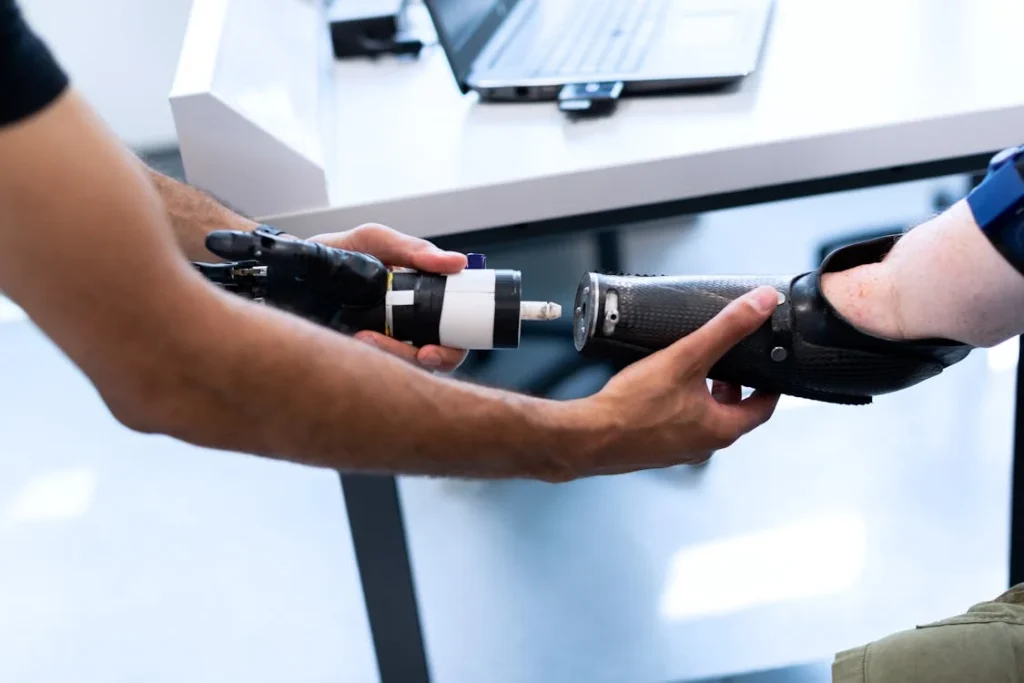Rehab is not just about healing the body. It’s also about building a routine—and sticking with it. That’s the hard part. Doing your rehab exercises every day can feel like a full-time job. Some days you’re tired. Some days you don’t see progress. And sometimes, life just gets in the way. Missing one or two sessions can quickly turn into skipping an entire week. And before you know it, motivation fades.
But there’s a quiet little trick that can help you stay on track. Something that works behind the scenes to keep you consistent, even on the tough days. It’s called a habit loop.
This simple concept, once you understand it, can make your rehab routine feel easier, more natural—and even automatic. At RoboBionics, we’ve seen how powerful habit loops can be when used the right way, especially for people recovering with tools like the Grippy™ Bionic Hand or training with our gamified rehab app.
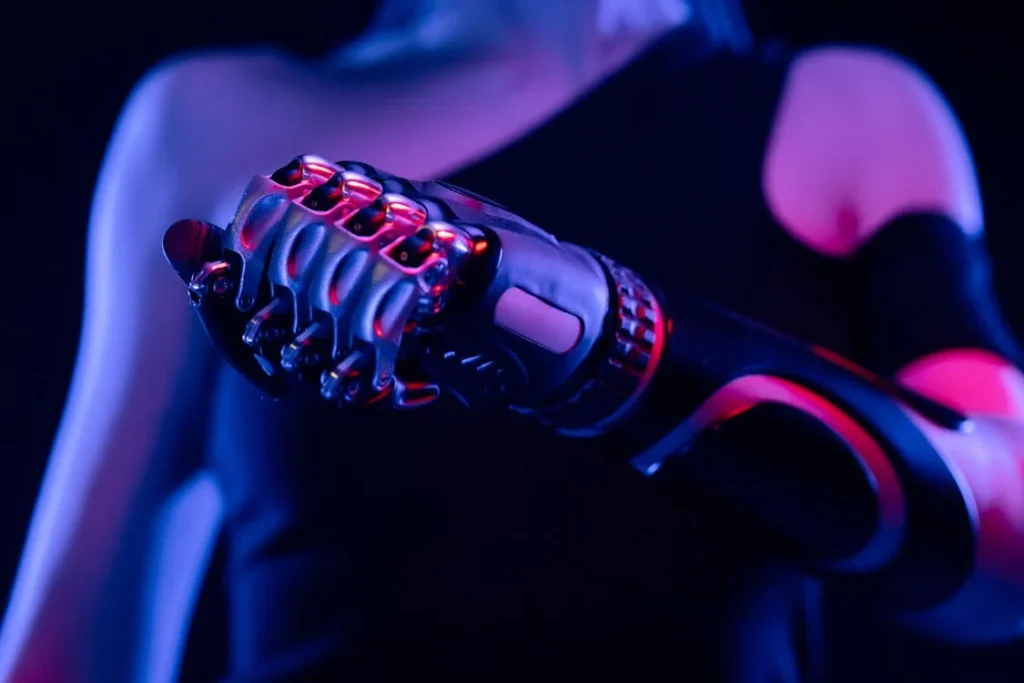
What Is a Habit Loop (And Why It Matters in Rehab)
Understanding the Power of Small Routines
A habit loop is a simple idea. It’s the cycle your brain follows to build any new behavior. This cycle has three parts: a cue, a routine, and a reward.
The cue is something that reminds your brain to start. It could be a time of day, a feeling, or something you see. The routine is the action you take—like doing your rehab exercises or opening the RoboBionics gamified rehab app. The reward is what your brain gets from doing the action. Maybe it’s a small sense of progress. Or feeling proud. Or even just finishing something hard.
When this loop repeats enough times, it becomes automatic. You don’t have to force it. You don’t have to think about it. Your brain just does it. That’s the magic of habit.
Rehabilitation takes time. It needs patience and steady effort. But it’s hard to stay motivated every single day. That’s why habit loops are so helpful. They keep you consistent even when you’re not feeling strong. They help your brain remember, “Hey, this is what we do now.”
Why Rehab Without Habits Often Fails
We’ve worked with so many people—kids, teens, adults—using the Grippy™ Hand or the BrawnBand™ or recovering after surgery. In the beginning, everyone is excited. Hope is high. People promise themselves, “I’ll do this every day.”
But life gets busy. One day you’re late for work. Another day your arm hurts. Maybe the exercises feel too hard. Or too easy. Or just boring.
Soon, the routine breaks.
And when the routine breaks, the progress slows. That’s where frustration creeps in. People start to feel like they’re not doing enough. Or worse—they start to think the problem is them. That they’re lazy. Or not trying hard enough.
But the truth is, the system failed—not the person.
That’s why we teach habit loops to every new user who joins us. Because once you have a system that works, you don’t need to rely on motivation. You rely on rhythm. On structure. On small daily wins that keep the loop going.
Making the Brain Your Ally
The brain is designed to look for patterns. It wants to save energy. So when it finds a routine that works, it stores it. It says, “Great! I know what to do when this cue shows up.” That’s how habits are formed.
This is good news. Because it means you can train your brain to help you heal.
Let’s say you decide to do your hand-strengthening rehab exercises right after brushing your teeth in the morning. Over time, brushing your teeth becomes the cue. The rehab exercise is the routine. And the little spark of pride you feel after finishing is the reward. Do this for a week. Then two. Then three. Slowly, it sticks. Soon, brushing your teeth and doing rehab just go together—like tea and biscuits.
Now, rehab isn’t something you “have to remember.” It becomes part of who you are.
And when the habit loop locks in? Your consistency skyrockets. And so does your recovery.
How We Build Habit Loops Into Our Rehab Tools
We didn’t just design the Grippy™ Hand, BrawnBand™, and gamified app to look good or feel advanced. We designed them to work with your brain. To make it easier—not harder—to stay consistent.
For example, our rehab app includes daily reminders. You can set the same time every day. That reminder becomes your cue. You open the app. Do the short rehab game. That’s your routine. You earn a badge, see your score rise, or hear a cheerful sound. That’s your reward.
These are tiny things. But they matter. They keep the loop alive.
We also made sure the rehab sessions don’t feel like a huge task. They’re short. Focused. Fun. Because when things feel simple, your brain doesn’t resist. You don’t dread it. You do it.
Even the design of the BrawnBand™ supports habit building. It’s easy to wear. Quick to start. Lightweight. You don’t have to fight with wires or settings. You just strap it on, tap a button, and begin.
And because it works with the app, you get instant feedback. You see your muscle reacting. You feel a sense of progress. Again—that’s your reward. And that feeling keeps your brain coming back.
You Don’t Need Big Changes—Just Tiny Wins
There’s a common mistake people make in rehab. They think they need to do a lot every day to see results. They aim for perfection. But when perfection becomes hard, they stop.
The truth? You don’t need perfect. You need consistent.
Even five minutes a day, done regularly, can create more change than one long session once a week. Because what matters is that you show up. Every day. Even a little.
That’s what habit loops help you do. They lower the pressure. They build rhythm. And they let tiny wins pile up—until you wake up one day and realize, I’ve come so far.
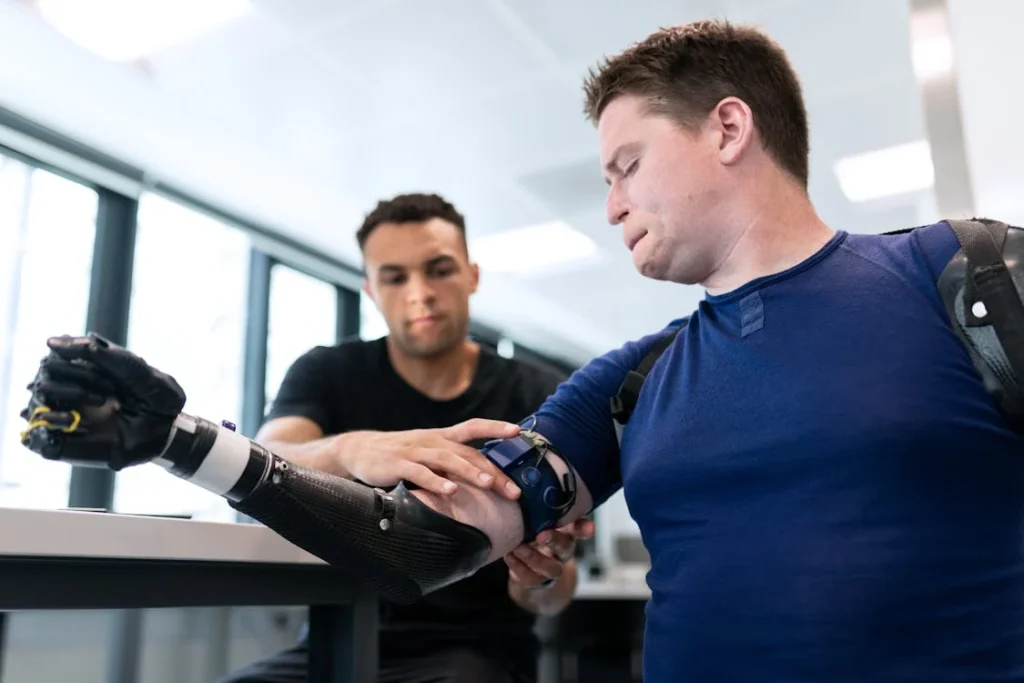
Designing Your Own Rehab Habit Loop at Home
Start With the Cue: Make It Obvious and Personal
If you want to build a habit, you need a clear starting point—something that tells your brain, “It’s time.” This starting point is your cue. The best cues are simple, specific, and tied to things you already do every day.
Look around your routine. Do you drink a cup of tea at 7 a.m.? Do you switch off the lights at night before bed? Maybe you change clothes after work or walk your dog after lunch. These everyday moments can become powerful cues.
Let’s say you decide that right after breakfast, you’ll spend five minutes on the rehab app. Breakfast becomes your anchor. Each morning, you eat, then you play one level on the app. Easy. Predictable. And with time, automatic.
The goal isn’t to force your brain into something new. It’s to attach rehab to something you’re already doing. That way, you don’t forget. You don’t delay. It just becomes part of life.
The cue is the first step to consistency—and maybe the most important. So choose one that fits your life. One that feels natural.
Keep the Routine Short, Simple, and Specific
Once you’ve set your cue, the next step is to define the routine. This is what you do after the cue. It needs to be small. Clear. And realistic.
Let’s say you use a Grippy™ Hand and you want to improve your grip. Instead of saying, “I’ll do my hand exercises,” try saying, “I’ll open the rehab app and complete one grip challenge.” That’s specific. You know exactly what to do. No confusion. No debate.
We’ve seen users try to set big goals like, “I’ll train for 30 minutes every day.” It sounds great, but it doesn’t always stick—especially when life gets busy. That’s why we always suggest starting with something tiny.
One game level. One minute with the BrawnBand™. One grip-and-release exercise.
When it’s small, your brain says, “Okay, I can do that.” And you do it. Again. And again. Over time, the routine grows. But the habit is already set.
Build a Reward That Feels Good Immediately
The third part of your habit loop is the reward. This is the feeling or experience your brain gets after completing the routine. It’s what makes the brain want to do it again.
Rehab can feel slow. Results may take weeks. That’s why the reward needs to come right away—even if it’s small.
That’s why we built rewards into our gamified rehab system. You finish a task, and the screen celebrates. You earn a badge. You hear a “ding.” You see your progress bar move.
These are not just playful touches. They’re fuel for your brain.
But you can create your own rewards too. Maybe after your rehab session, you enjoy a small piece of chocolate. Or you take five quiet minutes to stretch. Or listen to your favorite song. These little pleasures tell your brain, “This is worth it.”
And the more your brain enjoys the reward, the more likely it is to repeat the loop.
Track It, See It, Celebrate It
One of the easiest ways to strengthen a habit is to see your progress. A simple calendar. A streak counter. Even a notebook.
Every time you complete your rehab loop, mark it. Cross a date. Tap a box. Color a square.
Why does this work? Because it turns your effort into something visible. And what you can see, you value. It gives you proof that you’re sticking with it—even on tough days.
Our rehab app has built-in tracking for this reason. You log in, do your task, and watch your streak grow. It’s satisfying. And it’s encouraging. You start to think, “I don’t want to break the chain.” That mindset leads to real consistency.
You can even take a photo once a week to compare your progress. Not just of the hand, but of what you can do—open a bottle, write a name, hold a cup. These little milestones remind you that the habit is working.
When You Slip, Reset Without Guilt
Even the best habits get broken. Life happens. You miss a day. Or two. Or more. And suddenly, you feel like you’ve failed.
But here’s something important to remember: missing once is not the end.
What matters most is not perfection. It’s what you do next. Instead of giving up, simply return to your cue. Start again. One small session. One little win.
Guilt doesn’t build habits. Gentle resets do.
At RoboBionics, we always remind our users: recovery is a long game. Some days will be hard. But if you keep coming back, even with small steps, you will move forward.
That’s the power of habit loops. They give you a way to reset, recover, and rise—again and again.
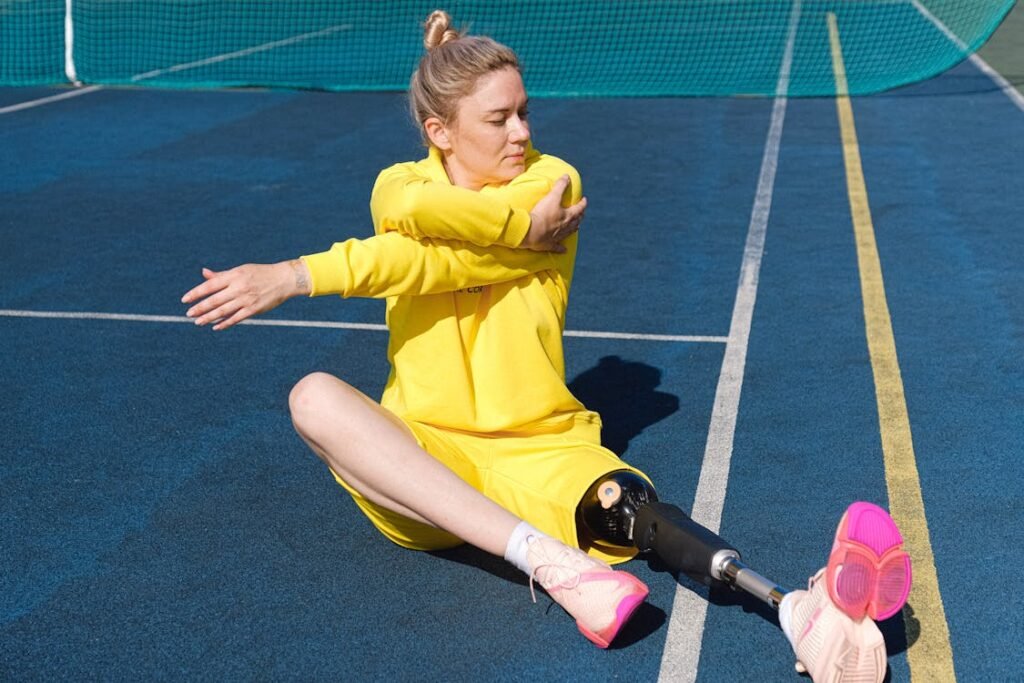
How Habit Loops Help Create Long-Term Success in Recovery
Consistency Builds Confidence
When you show up every day—even for a short session—you start to believe in yourself again. That belief grows quietly, like a seed. You don’t notice it at first. But then one day, you realize that you’re no longer dreading therapy. You’re just doing it.
This is the quiet power of habit. It turns doubt into discipline. Every time you complete a rehab loop, your brain sends a simple message: “You did what you said you would do.” That message builds trust in yourself.
And when your self-trust grows, your confidence follows.
We’ve seen this with users across India—students, athletes, workers, parents. Some of them were unsure at first. They had stopped and restarted therapy many times. But when they set up a small habit loop, something changed. They became consistent. Not perfect. Not always motivated. But consistent.
Over time, they began to feel proud. Not just of the big milestones, but of the daily effort. That daily effort is what changes lives.
Habit Loops Support Your Brain and Body Together
Rehabilitation is not just physical. It’s deeply mental. And your brain plays a huge role in how quickly—and how fully—you recover.
Every movement you make, every grip you try, every stretch you hold—your brain is watching. It’s learning. And it remembers patterns. The more often you repeat a movement, the stronger the signal becomes between your brain and body.
But here’s where habit loops shine: they ensure those movements happen often.
When your rehab becomes part of your daily rhythm, the brain receives those signals again and again. It strengthens the muscle-memory connections. It sharpens your control. It helps you learn faster. And it reduces the feeling of “starting over” after a missed day.
It’s like practicing music or language. Daily practice—no matter how short—works better than long sessions that are far apart.
That’s why the Grippy™ Bionic Hand, the BrawnBand™, and our rehab app are all designed for easy, daily use. We want to make those brain-body signals stronger. And habits are how we do that.
Less Effort, More Progress
One of the best parts of a habit loop is this: after a while, it doesn’t feel hard anymore. What felt like effort in week one feels automatic in week four.
This happens because your brain has moved the behavior from a “decision” to a “default.”
In the beginning, you have to decide to do rehab. You have to remind yourself, push yourself, argue with yourself. That takes energy.
But once the habit loop is set? You just do it. Like brushing your teeth. Like tying your shoes. It becomes a default part of your day.
That frees up your mental energy for other things—like focusing on technique, setting new goals, or just enjoying your progress.
So instead of spending energy on “starting,” you spend it on getting better. That’s the power of habit. It clears the path for progress.
How We Support Your Habit Journey at RoboBionics
We don’t just hand you a device and say “good luck.” We walk with you—step by step. And habit-building is one of the first things we teach.
When you get your Grippy™ Hand or BrawnBand™, we guide you through setting up your daily loop. What time will you train? What will your cue be? What will your routine look like? And how will you reward yourself?
We help you plan. We help you track. And we check in.
Even our gamified rehab app is built with habits in mind. It starts with small daily tasks, not overwhelming plans. It sends gentle reminders. It gives instant rewards. And it helps you log your wins.
We also encourage you to share your goals with someone close—a friend, a sibling, a therapist. When others know your routine, they can help you stick with it. Not with pressure, but with support.
Some of our users set up friendly challenges with others using the app. Who can complete three days in a row? Who can hold the longest grip today? It’s not about competition. It’s about community. And community is a powerful support system for habits.
What Happens When a Habit Becomes Identity
Here’s where it gets beautiful.
At first, rehab is just something you do. But over time, it becomes part of who you are.
You’re not just a patient. You’re a person who takes care of their recovery. You’re someone who shows up. You’re consistent. You’re committed.
This identity shift happens quietly. But it sticks. And it gives you strength.
Because when you believe, “I’m the kind of person who trains daily,” you stop needing motivation. You stop asking, “Should I do this today?” The answer is already inside you.
And that belief carries over into other parts of life. You approach work with more energy. You show up in relationships with more confidence. You try new things—because you trust yourself to stay the course.
This is what habit loops create—not just daily actions, but lasting change.
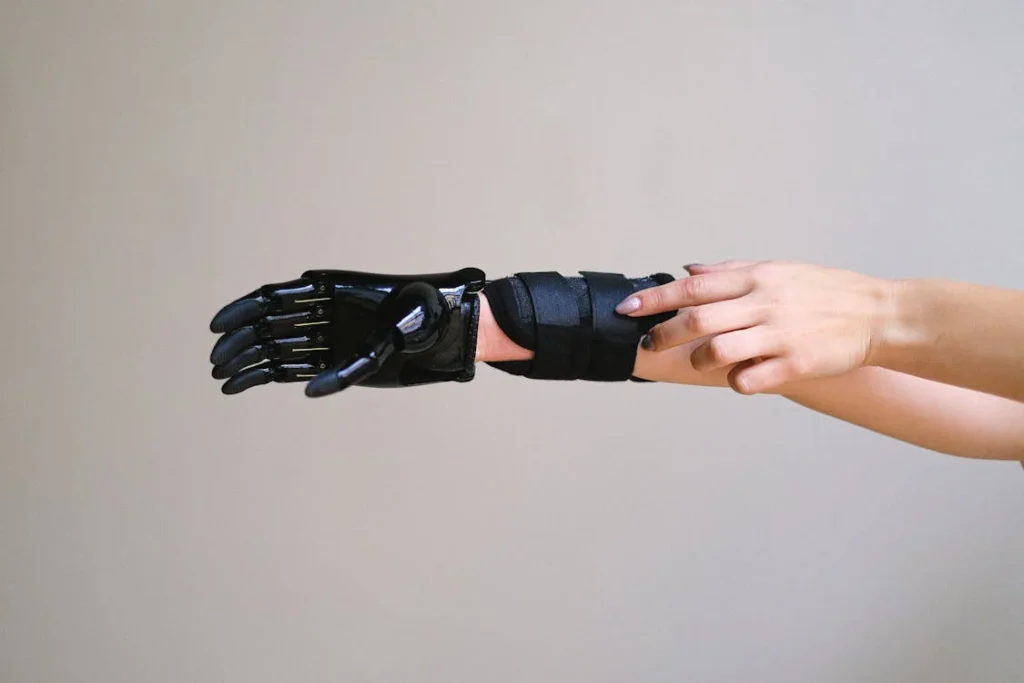
Using Habit Loops to Stay Motivated in the Long Run
Why Motivation Fades (And How Habits Keep You Going)
In the beginning, motivation is strong. You’re excited. You’re hopeful. You’ve set goals. Maybe you even promised yourself, “This time, I’ll stick to it.” That spark feels good. But motivation doesn’t last forever.
Some mornings you’ll wake up tired. Some days, your hand might ache. Life will get busy. Friends will call. Work will demand your energy. And motivation? It fades.
But habits don’t need motivation. That’s what makes them powerful.
When rehab becomes a habit, you do it even when you’re not in the mood. Even when it’s boring. Even when there are a hundred other things pulling at your time. You still show up—because it’s what you do.
That’s why building strong habit loops is better than chasing constant motivation. Habits make sure you keep going, even when your mood changes. They carry you forward until you feel ready again.
Turning Plateaus Into Progress
One of the hardest moments in rehab is when you hit a plateau. At first, progress feels fast. You’re learning. You’re improving. You’re seeing results.
But then, things slow down. Your hand doesn’t feel stronger. Your movements don’t seem smoother. You start to wonder if the work is even helping.
This is a normal part of recovery—but it’s also where many people quit.
Habit loops help you push through this phase. Because when your rehab is part of your daily rhythm, you don’t need proof every day. You keep going anyway. You trust the process. You ride through the plateau.
And soon enough, the next breakthrough comes.
Maybe your grip suddenly improves. Maybe you hold something heavier. Or move more freely. That jump forward only happens because you stayed consistent—even when it didn’t feel exciting.
This is why we focus so much on helping users build tiny, daily rehab habits. When the loop is strong, you don’t stop when things get hard. You keep moving. And moving is how progress returns.
When Habits Meet Purpose
Habits are not just about routines. They’re about why you do what you do.
Maybe your goal is to play with your child again. Or cook a full meal. Or return to work with full use of your hands. Maybe it’s just to feel like you again.
These goals are more than dreams. They are fuel.
When you tie your habit to a deep purpose, it becomes stronger. You’re not just doing hand exercises—you’re getting closer to holding your son’s hand with strength. You’re not just playing a level on the app—you’re training to regain your independence.
At RoboBionics, we encourage our users to write down their personal why. Put it on paper. Stick it near your mirror. Say it out loud before your rehab sessions.
Because when you connect your daily rehab habit to a bigger reason, it’s easier to stay on track. You’re not just building a routine—you’re building your life back.
Celebrating the Small Stuff
Another way habit loops support long-term motivation is by helping you notice progress.
Big wins are rare. But small wins? They happen all the time—if you look for them.
You picked up a pen more smoothly today. You felt less pain holding a cup. You opened a jar without help. These might seem small, but they are signs that the system is working. That your habits are helping.
The brain loves progress. When you celebrate small wins, your brain releases dopamine. That reward makes you want to keep going. It turns your rehab into something that feels good.
Our gamified rehab app was built with this in mind. Each level completed, each new score, each badge earned—these are little sparks of joy. They give you something to smile about every day. And those smiles? They keep you coming back.
So even if you don’t see big changes right away, keep tracking your small wins. Write them down. Tell someone. Celebrate them.
Because progress is not one giant step. It’s a thousand tiny ones.
Community Makes Habits Stick
Doing rehab alone is hard. But when you’re part of a group—even a virtual one—habits become easier to keep.
That’s why we’re building community into everything we do. In the app. At our partner clinics. On our support calls.
When you know someone else is doing their rehab today, it motivates you to do yours too. When you hear someone’s story of sticking with it through a tough week, you feel stronger. When someone cheers for your progress, it feels like you matter.
Community gives habits a heartbeat. It turns a solo routine into something shared.
Even something as small as sending a “well done” message through the app, or texting a rehab buddy, can strengthen your loop. You feel seen. Encouraged. Inspired.
And when habits are supported by connection, they last.
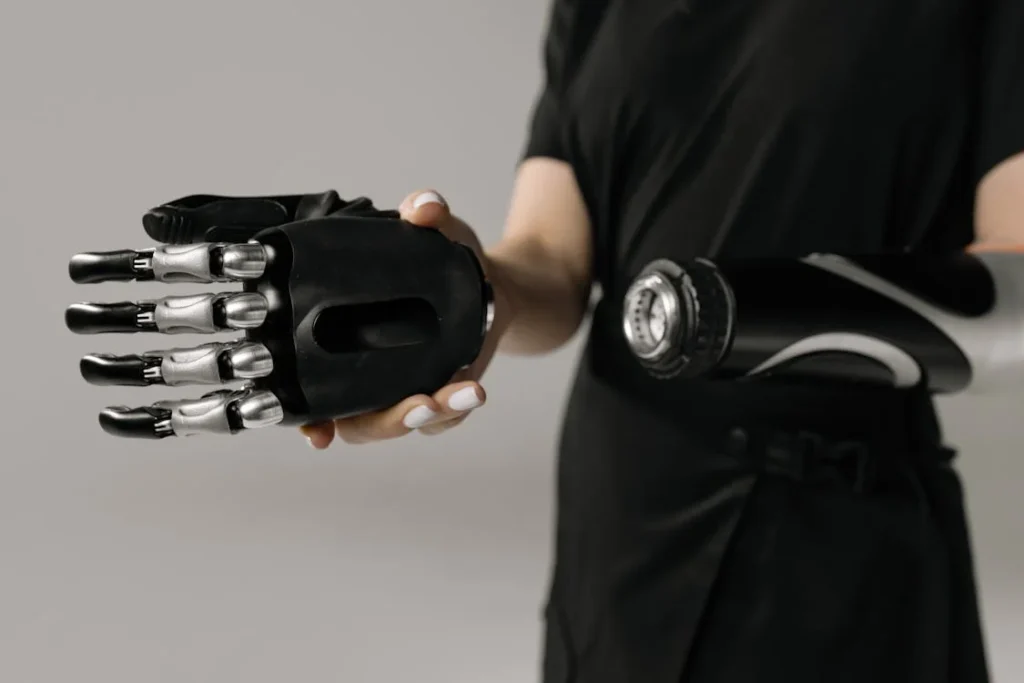
Helping Young Minds Heal: Habit Loops for Children and Teens in Rehab
Rehab for Kids Is Not Just Smaller—It’s Different
When a child or teen needs rehab—whether it’s due to an injury, limb difference, or post-surgical recovery—the process isn’t just a scaled-down version of adult therapy. It’s completely different. Children learn differently. They stay motivated differently. They face different emotional challenges. And most of all, their habits are shaped in a totally unique way.
At RoboBionics, we’ve worked closely with families and young users of our Grippy™ Mech Finger, Grippy™ Bionic Hand, and gamified rehab app. We’ve learned that building strong rehab habits early on not only improves physical recovery—it also strengthens confidence, emotional resilience, and independence.
But to make rehab a habit for a child or teen, the loop has to be playful, flexible, and family-friendly.
Creating Positive Cues in a Child’s World
For kids, cues need to feel like fun, not instructions. If you say, “It’s time for therapy,” many children will groan. But if you say, “Let’s play your power game,” suddenly their brain lights up.
Cues work best when they’re tied to something joyful or familiar. For example, after brushing their teeth, a child might get to “play their bionic hero game” using the rehab app. Or right after school, they get five minutes to control a character using their hand movements. These cues can be part of their daily life—not separate from it.
And the more these cues are connected to existing routines like snack time, cartoons, or bedtime rituals, the more naturally they trigger the rehab activity.
Children respond to structure, but only if it feels warm and engaging. The cue must invite them in, not push them forward.
Making the Routine Feel Like Play, Not Pressure
Kids don’t always understand why rehab is important. They might not see long-term goals the way adults do. That’s why the routine part of the habit loop needs to feel like a game—not a task.
That’s exactly what our gamified rehab app is designed to do. Instead of boring exercises, kids see characters they control. They fly balloons, move puzzles, climb mountains—all using their hand or arm. This is not just fun—it’s targeted therapy, hidden inside a game.
When a child grips with a prosthetic to lift a rocket, they’re strengthening their hand. When they stretch their fingers to catch stars, they’re building flexibility. But in their mind, they’re just playing. And that’s the magic.
Parents tell us their children go from resisting therapy to reminding them when it’s time to “level up.” The habit loop forms without friction. And it sticks.
The Reward Must Be Immediate and Emotional
Adults might feel satisfaction from long-term goals. But kids need instant feedback. They need to know right now that their action made a difference.
Our app gives instant cheers, stars, and badges. The screen responds with sound, color, and excitement. This makes the brain go, “Yes! Let’s do it again.” That spark of joy is the reward.
But rewards don’t always need to come from the app. A parent clapping. A sibling watching. A sticker on a progress chart. A favorite cartoon after a session. All these little touches add up.
When a child associates rehab with praise, fun, and pride, they want to keep going. And that’s what creates a loop that lasts beyond just the current therapy cycle.
Building Family Support Into the Loop
No child does rehab alone. Whether it’s a parent, guardian, or sibling, the people around them make or break the habit loop.
That’s why we involve families from the very start. We teach them how to help create cues, how to turn therapy into a daily ritual, and how to cheer—without pressure. Even five minutes a day of joyful rehab can create big results over time, especially when done together.
Some families even make it a group event. The child does the app session. The parent claps or joins in. The sibling watches and offers encouragement. It becomes a shared moment. Not medical. Not sad. Just love, wrapped in a little routine.
This not only helps with healing—it brings families closer.
Long-Term Benefits Beyond the Body
When kids build rehab habits early, something powerful happens. They carry those habits into other parts of life. They become more self-aware. More disciplined. More confident.
We’ve seen children who were shy and unsure grow into proud, capable young people. They talk about their Grippy™ Hand like it’s a superpower. They treat rehab like a mission. And they remind others: “Look what I can do.”
These aren’t just physical improvements. They’re emotional milestones. And they come from one simple system—habit loops designed with children in mind.
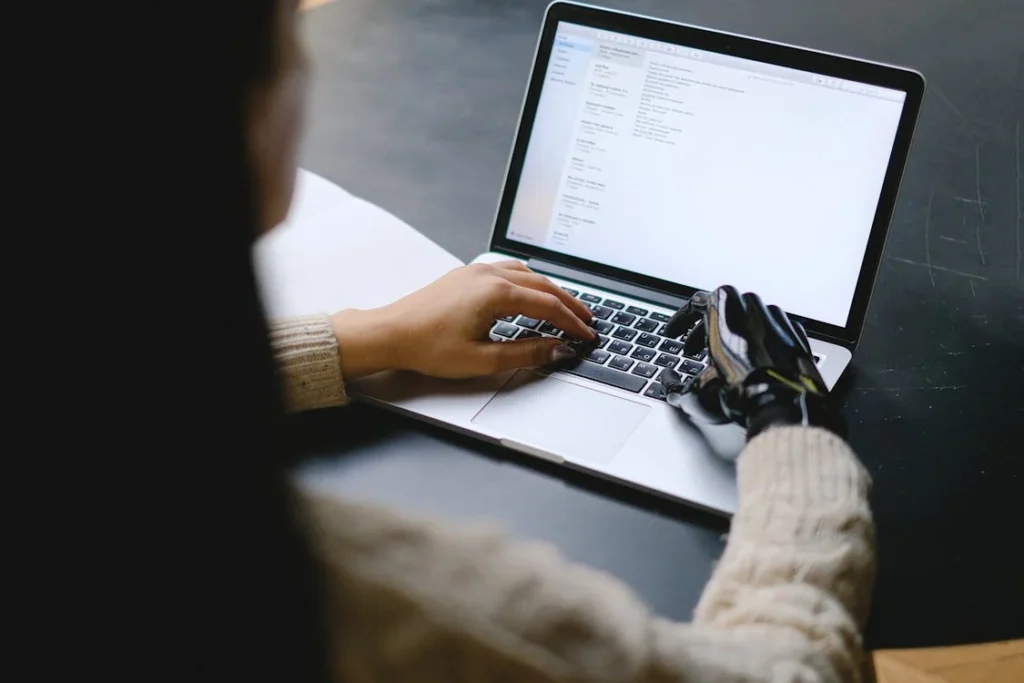
Rehab From Anywhere: How Habit Loops Empower Rural Users
When Distance Becomes a Barrier
For many people living in cities, rehab may mean regular clinic visits, professional support, and easy access to devices and therapists. But in rural or remote areas, the story is different.
Visiting a rehab center might take hours. Public transport may be unreliable. The nearest prosthetic technician could be in another district. And for many families, each clinic visit means a day off work and extra costs.
This distance often leads to skipped sessions, slow progress, and even people giving up altogether. Not because they want to—but because the system isn’t built for them.
At RoboBionics, we believe care should not be limited by your pin code. We believe rehab must reach you, not the other way around.
That’s where habit loops—and home-friendly rehab tools—change everything.
Habit Loops Bring Structure to Unstructured Environments
In rural areas, life can be unpredictable. One day is spent farming, another attending a family function, and another waiting for electricity to return. That’s the reality.
So instead of relying on fixed clinic appointments, habit loops help users create self-guided structure. When people understand how to build their own loop—a cue, a routine, and a reward—they can create rehab rituals that fit their lives.
Maybe it’s doing a grip exercise before morning tea. Or using the app while waiting for dinner. Or practicing with the Grippy™ Hand after prayer time.
These anchors are simple. But they make rehab consistent, even when the world outside is not.
Offline-Friendly Rehab Tools That Support the Loop
We designed our rehab app with rural users in mind. It works offline after download. The games are lightweight. The controls are simple. The interface is friendly even for first-time smartphone users.
Once installed, the app becomes a pocket-sized rehab center. No Wi-Fi? No problem. No technician nearby? You can still train. The habit loop keeps going—no matter where you are.
And with tools like the BrawnBand™ and Grippy™ Mech Finger, users can complete meaningful exercises with minimal setup. No wires, no complex instructions. Just charge, wear, and begin.
This makes it easy to keep the loop alive, even without clinic support.
Local Languages, Local Life
We’re also expanding our content into more Indian languages. Because building a habit is easier when the instructions sound like home.
When someone hears rehab guidance in Marathi, Tamil, or Hindi, it feels familiar. Trusted. Clear. That familiarity makes them more likely to start—and keep going.
We’ve seen grandparents teach their grandchildren how to use the app. We’ve seen village health workers help users create their daily rehab routines. These moments are powerful. Because they prove that care doesn’t need to be complicated. It needs to be culturally close.
And the habit loop makes sure that once someone starts, they keep going.
Turning Households Into Healing Spaces
One of the most beautiful things we’ve seen is how families in rural areas support each other. A mother encourages her son to use the Grippy™ Hand while she cooks. A grandfather sets a reminder on his feature phone to help his grandson stick to his rehab time. A sibling becomes the scorekeeper in the rehab app.
In places where clinics are far away, the home becomes the healing space. The kitchen. The courtyard. The front step.
And with a good habit loop, that home rehab becomes strong, steady, and successful.
We often remind users: Your body is strong. Your brain is ready. You just need a small rhythm. One loop. One time a day. That’s enough to change everything.
The Bigger Picture: Equal Access Through Everyday Habits
At RoboBionics, we’re not just building devices. We’re building equality.
By helping rural users build their own habit loops—powered by offline tools, simple routines, and cultural support—we’re making sure recovery is no longer just for the lucky few.
It’s for everyone.
The schoolboy in Satara. The farm worker in Chhattisgarh. The grandmother in Assam. Each of them deserves a path to healing. And when that path is built through small, daily habits—it becomes walkable. Even joyful.
Because consistency doesn’t come from clinics alone. It comes from daily life. And habit loops are the bridge between daily life and lasting recovery.
Conclusion
Rehab doesn’t have to feel hard, complicated, or out of reach. With the power of habit loops, it becomes something you do naturally—just like brushing your teeth or making your morning chai. A simple cue, a small routine, and a satisfying reward can turn recovery into a daily rhythm, no matter where you live or what challenges you face.
At RoboBionics, we’ve built our tools—like the Grippy™ Hand, BrawnBand™, and gamified rehab app—to support this habit loop. They’re simple, joyful, and designed for real people with real lives. Whether you’re in a busy city or a quiet village, consistency is the key. And habit loops are how you unlock it.
You don’t need to do everything. Just one small thing every day. That’s enough to rebuild strength, restore confidence, and reclaim your life—one loop at a time.
Ready to build your own rehab habit?
Book a free demo today at robobionics.store/bookdemo
Let’s create habits that heal. Together.



